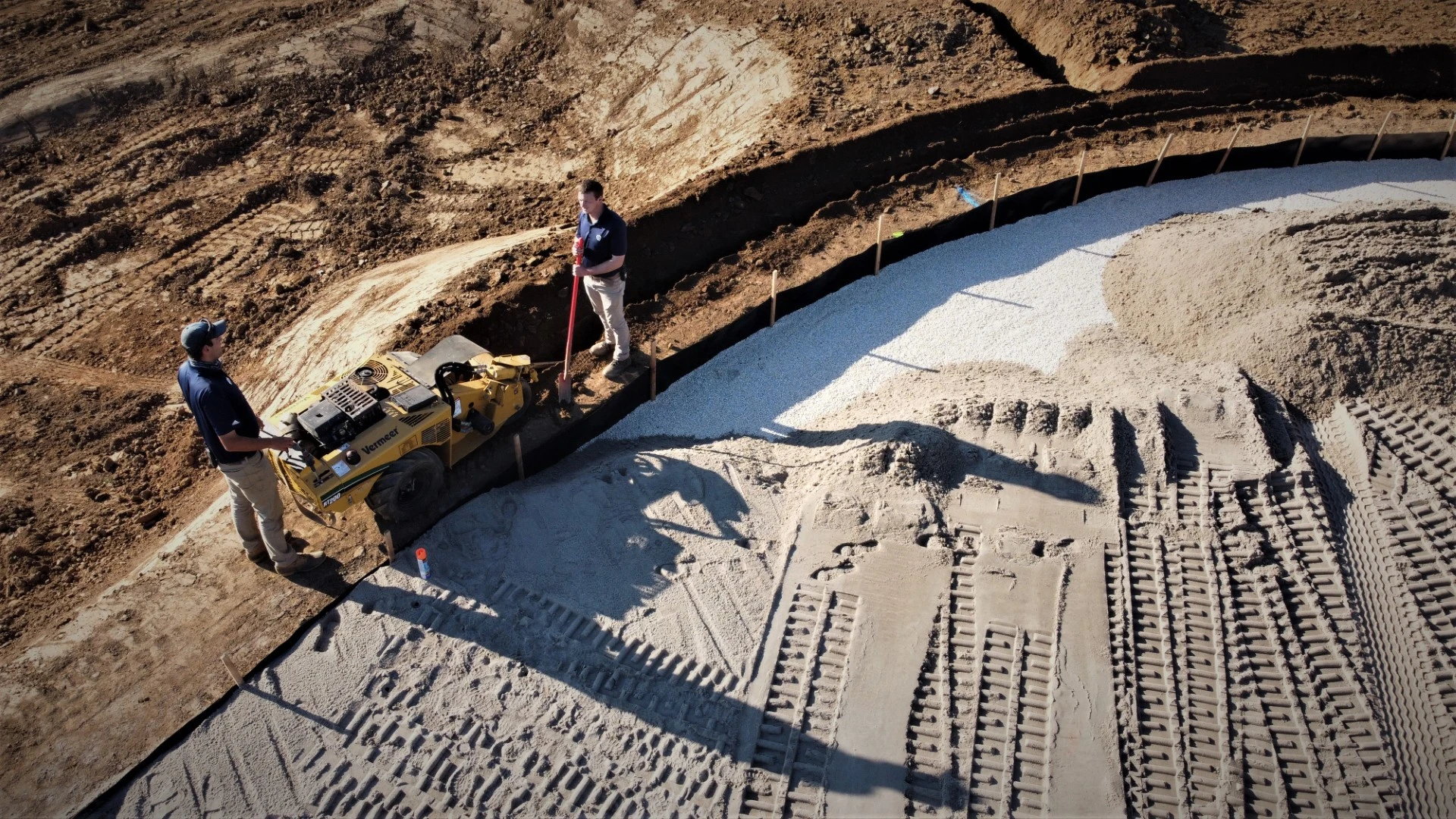
Change can sometimes be hard for anyone to accept, much less the golfers who play your facility. However, change brought about in an incremental, continuous process over time can make subtle but marked improvements to your facility. That kind of change is known as kaizen, a Japanese term that has been used at such companies as Toyota and Ariens to help make them among the most successful in the world. Before discussing kaizen, it’s important to know how it entered my professional life almost 20 years ago.
Back in the mid-2000s, I was the section chair at the Virginia Turfgrass Councils Conference and Show. I was in charge of introducing the speakers in my section and one of those speakers was Mr. Jim Paluch of JP Horizons out of Ohio. Not one minute into his presentation he had the entire audience engaged with his passion and drive discussing builders and destroyers, creating teams and getting them engaged in the operation, and how lean could be used in the golf world to help streamline operations. I was mesmerized listening to Jim during his hour-long presentation and I was fired up, ready to take on the world.
As Jim finished, I went up, shook his hand and told him how much I enjoyed his presentation. After he walked off the stage, he called my name and asked, “If you liked that so much, why don’t get started on your own journey?” He then threw his book, “Five Important Things,” to me. I went home and read his book over the course of a few days, then reached out to him to let him know how much I enjoyed it. Little did I know Jim had a plan for me.
Jim and I spoke a few weeks later and he offered me his 52-week program, The Working Smarter Training Challenge, to try at my golf course, The Shenvalee Golf Resort in New Market, Virginia. We were going to be the first golf maintenance operation in the country to test it. I wasn’t sure I could make it work with the motley crew I had — my team, not the band — but I took it on.
The Challenge was a challenge at times but we achieved some amazing results, all led and instigated by the crew: more efficient ways to get people out the door in the morning, better shop design to get equipment in and out faster, analyzing how to more efficiently aerify greens. I was hooked and Jim had more in store for me.
We spoke a few weeks later and he asked if I was willing to come to his company headquarters to talk about how lean and kaizen might be able to function in the golf maintenance world. I flew to Ohio and met Jim and his team, namely his wife, Beth, and Jim Coulter, one of his lead people at JP Horizons. We discussed my going around the country to speak at conferences about this program and offer it in a drawing to someone to try out. I agreed to take it on and created the presentation over a two-day power session at JP Horizons, using what we did at Shenvalee as the basis of my PowerPoint.
Over the course of the next 18 months, I spoke all over the country: Las Vegas; Ames, Iowa; Naples, Florida; Myrtle Beach, South Carolina; Helena, Montana; and Minneapolis-St. Paul were just some of the places where I was a featured speaker. While we created a nice buzz, with some articles showing up in some major magazines, it never really took off in golf maintenance. But for me, it became life and how I’d live it professionally and personally. And I was offered the opportunity a few years ago to put it all to use.
Golf Course Industry gave me the opportunity to talk about my return to golf after a 13-year absence and it’s all well-documented. Thanks to Guy and Matt for allowing me the space to talk about it. Now that I was back in golf, kaizen came back to the forefront of the golf course. For us to survive and thrive, the course needed help.
My course barely survived getting shut down right before COVID-19 hit. We survived only by a 3-2 city council vote and I was tasked as the newly appointed (but still interim) general manager/golf course superintendent to find ways to cut money, operate smarter financially and be more efficient. Efficiency, lean management and improvements sounded a lot like kaizen.

Initially, I had to cut more than $600,000 from the operating budget. It was a huge blow, but I felt we could make it all work by being more stringent in our operations. We eliminated more than 30 acres of rough and allowed it to grow to a natural state. We instituted the regular use of growth regulators on greens, tees and fairways to where we only mowed fairways and tees once a week. Those two immediate and easy-to-implement changes paid dividends in gas and labor savings. We were on our way.
I began talking with our current golfers as well as with the people who had played here before about what they did and didn’t like about Heritage Oaks and its daily playing conditions. No. 1 on the list were our bunkers, which had not been edged since their installation in 2001. Other comments focused on soggy, wet fairways, slow greens and inconsistent rough. Our customers presented us with a game plan and we began to change and improve.
We edged all the greenside bunkers and worked them up, instantly making them better but more noticeable as they looked “clean.” The second year, we edged the fairway traps. In less than 18 months, the bunkers were addressed. Other changes were slower. We began seeding around the greens to improve the stand of turf there. We began changing how we watered the golf course and how it handled the water by implementing more effective ways to aerify. We added wetting agents to help us move water more efficiently. And we began to modify our reputation. We weren’t executing massive changes, but people started to notice. Play started going up after COVID and we’ve not looked back.
In the pro shop, we began making changes as well. We acquired a new fleet of carts and offered new apparel (but not an overabundance of new apparel and with more focus on what the golfer needs to play, like balls, gloves, tees and towels). We had a smaller but more efficient staff in the pro shop with a focus on part-time retirees rather than full-time staff to run the pro shop under the tutelage of our head professional, Dave Johns. We needed to gently nudge our rates as we were just priced too low for daily play and outside tournaments. We increased by $4 to $5.
We also made it a point to try to attract college students to play the golf course by offering a discounted student season pass. In 2021, we had 35 college passholders. The next year, we had 70. This year, we have 150. A fourfold increase in just two years. We simply used word of mouth to advertise this new rate and it exploded.
Word spread that Heritage Oaks was a different golf course. We were in better shape on the course, and we had a much more efficient, responsible staff that made the whole experience better. Play increased and in my second year the course was profitable for the first time in its 22-year existence. Fast forward to this year, my third, and the course doubled its profits and play is up over 20 percent from 2022.
The discussions of closing the course are now long past, and we have more in store for 2024 (an accidental rhyme there). We plan on finally opening the snack bar, which we will run in-house, and we are going to welcome back volunteers to help us run the golf course a little better. We need starters and rangers thanks to our increased play and I am hopeful that we can fill four or five volunteer spots.
None of our successes would have been possible without the lessons I learned from Jim Paluch, especially about lean management and kaizen. Our operation is focused on improvements that make it stand out and that offer value to the people who play here.
And, as evidenced by our third year of record play and revenue, it seems to be working.
Get curated news on YOUR industry.
Enter your email to receive our newsletters.

Explore the December 2023 Issue
Check out more from this issue and find your next story to read.
Latest from Golf Course Industry
- Standard Golf announces new product lineup for 2025
- The Salt Pond taps Troon for management
- KemperSports selected to manage Swansea Country Club
- From the publisher’s pen: Grab that guide
- Introducing our April 2025 issue
- South Carolina leaders honor golf course superintendent
- One and only
- Wild can be good





